Applying to the 2025 NSF Graduate Fellowship
The National Science Foundation (NSF) awards $159,000 to up to 2,300 Graduate Research Fellowships (GRFP) every year. In 2024, the NSF awarded fellowships to 14.44% of applicants [1]. This program is intended for U.S. citizens.
I recently completed my application for the NSF GRFP and wanted to share the stuff I found important. I applied under the Computer Science - Robotics topic for the 2025 cycle.
This post covers:
NSF Fellowship Solicitation
The most important resource for applying is the program’s solicitation [3]. It outlines all essential information about the program, application guidelines, and goals.
Program Goals
According to the solicitation [3], the goals of the program are to:
- Select individuals with the demonstrated potential to be high-achieving scientists and engineers.
- Broaden participation of the full spectrum of diverse talents in STEM.
Application Components
The application includes:
-
Personal Statement
- This statement should be max 3 pages. My personal statement.
- Research Statement
- This statement should be max 2 pages.
- Reference Letters
- Each letter is max 2 pages. You need Minimum 2 letters and can have a maximum of 5.
Ensure you follow all formatting guidelines, as failure to do so can lead to automatic rejection.
Each statement should address the intellectual merit and broader impacts of your proposed research. Here’s a breakdown of what to include in each statement:
Intellectual Merit:
This section should highlight your potential as a scientist or engineer, including research experience, academic achievements, and industry experience. It usually has more detail than the broader impacts section.
Broader Impacts:
In the research statement, broader impacts should relate to your research. In the personal statement, they should focus on activities outside of your research. Address the societal benefits of your work, such as:
- Full participation of women, persons with disabilities, and underrepresented minorities in STEM.
- Improved STEM education and educator development at any level.
- Increased public scientific literacy and engagement with science and technology.
- Improved well-being of individuals in society.
- Development of a diverse, globally competitive STEM workforce.
- Increased partnerships between academia, industry, and other sectors.
- Improved national security.
- Increased economic competitiveness of the United States.
- Enhanced infrastructure for research and education.
Reference letters should also discuss both intellectual merit and broader impacts.
Review Rubric
The review rubric for the NSF GRFP includes:
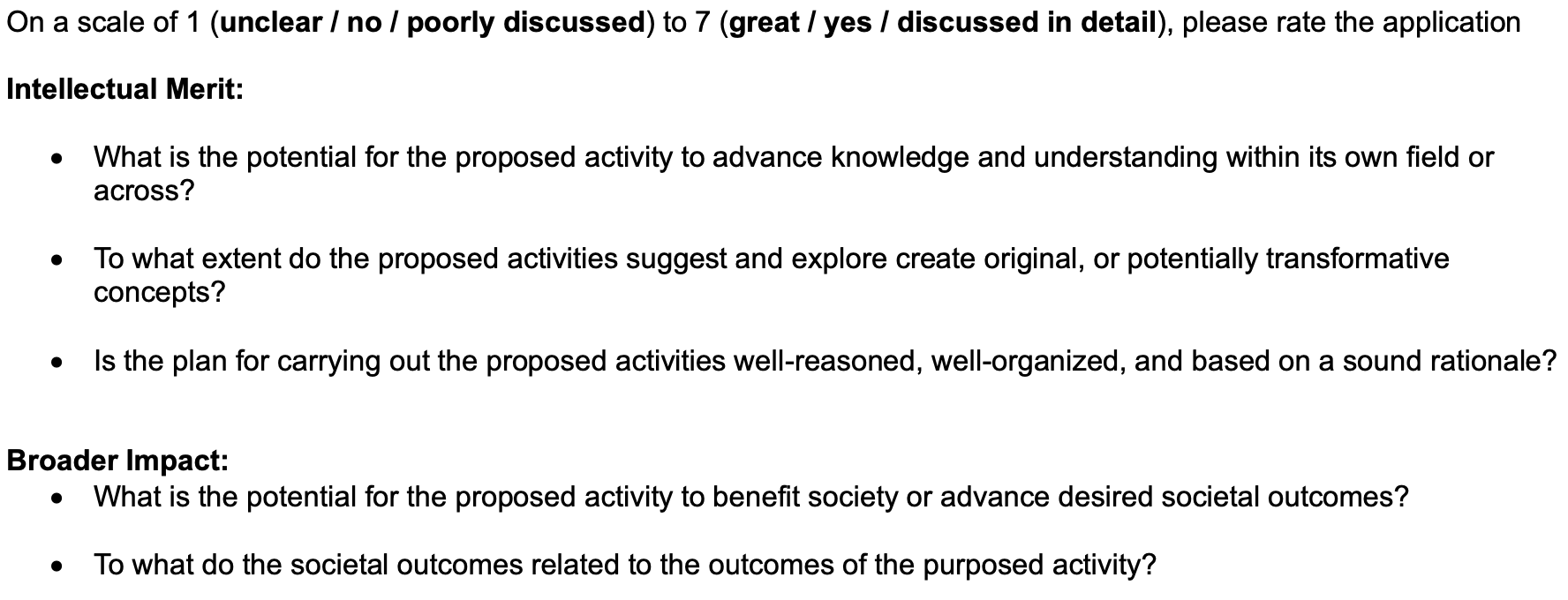
The rubric comes from the solicitation [3], while the scoring system was explained during an NSF GRFP bootcamp at my university.
Discussions
Based on past applications found at Alex Hunter Lang Website [4], successful applicants often have at least one research publication.
Writing my NSF GRFP application took about five months, juggling classes and research. I recommend starting early and refining your statements with feedback from peers. Clarity and reliability are critical.
Feel free to reach out if you have questions.
Statistics for the Program
After applying, I analyzed the 2024 awardee statistics. Here’s a breakdown:
Distribution of recipient majors:
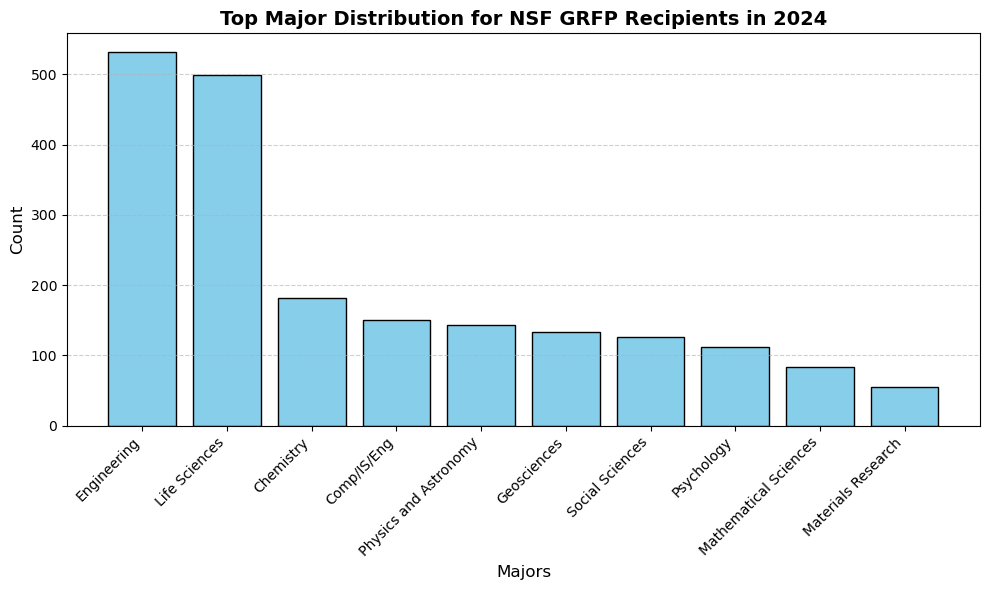
Top 35 fields accepted in the NSF GRFP:
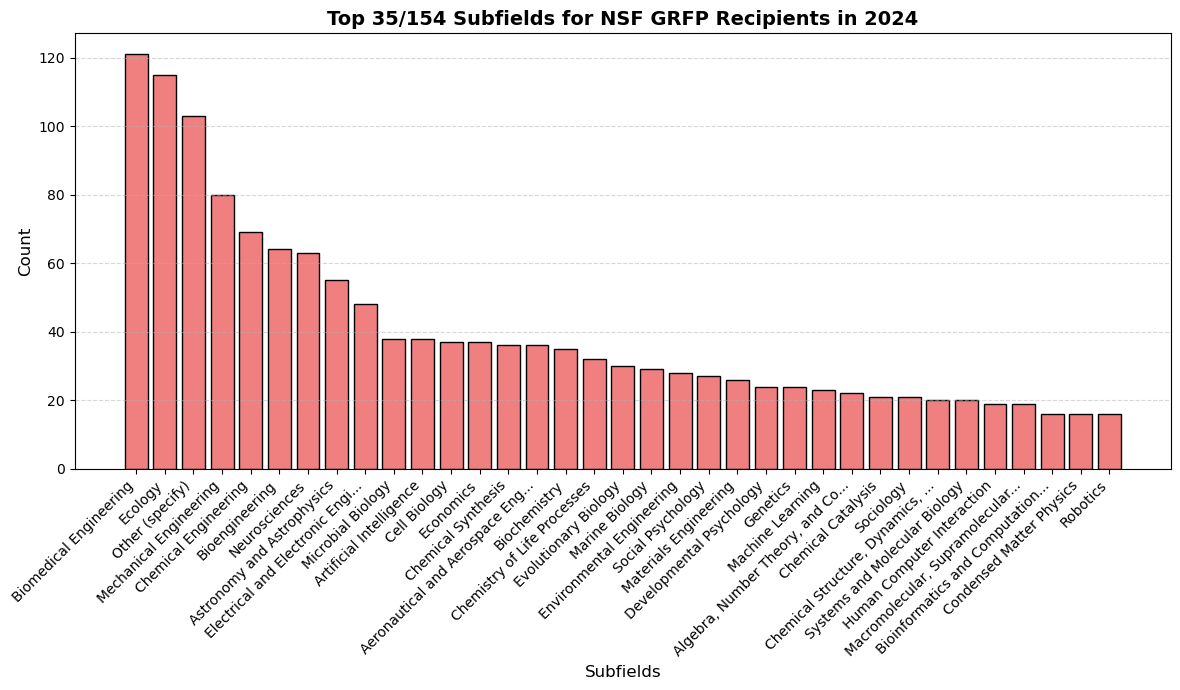
Top computer science subfields accepted:
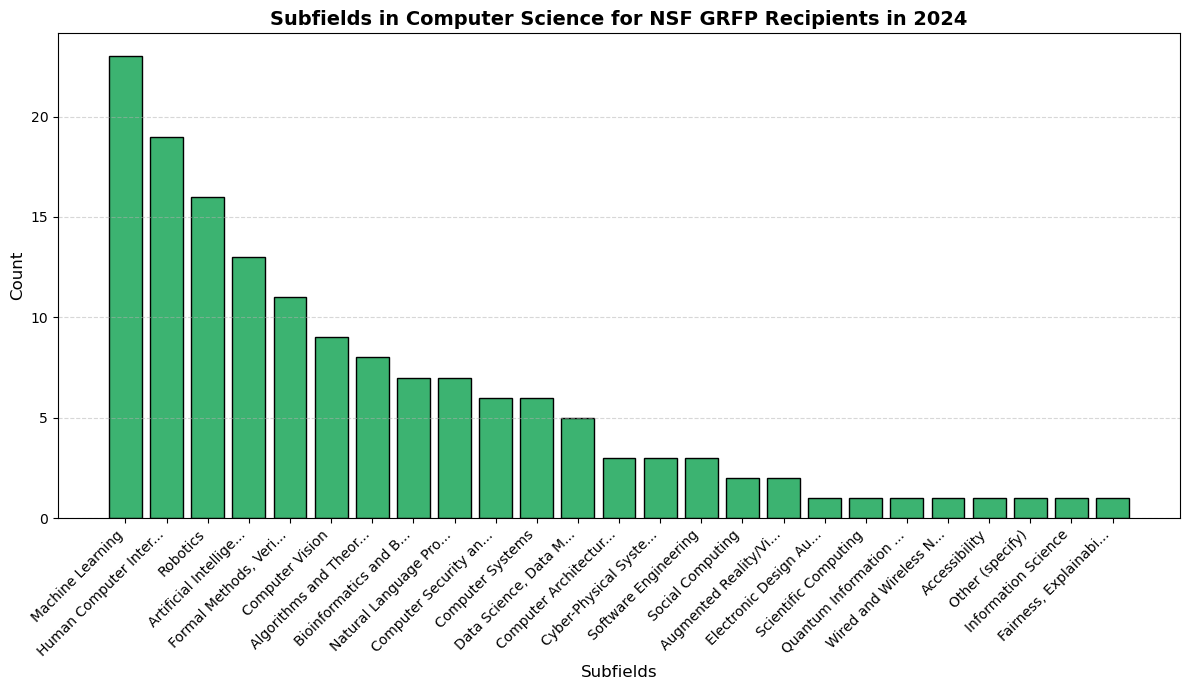
Top 20 institutions by number of recipients:
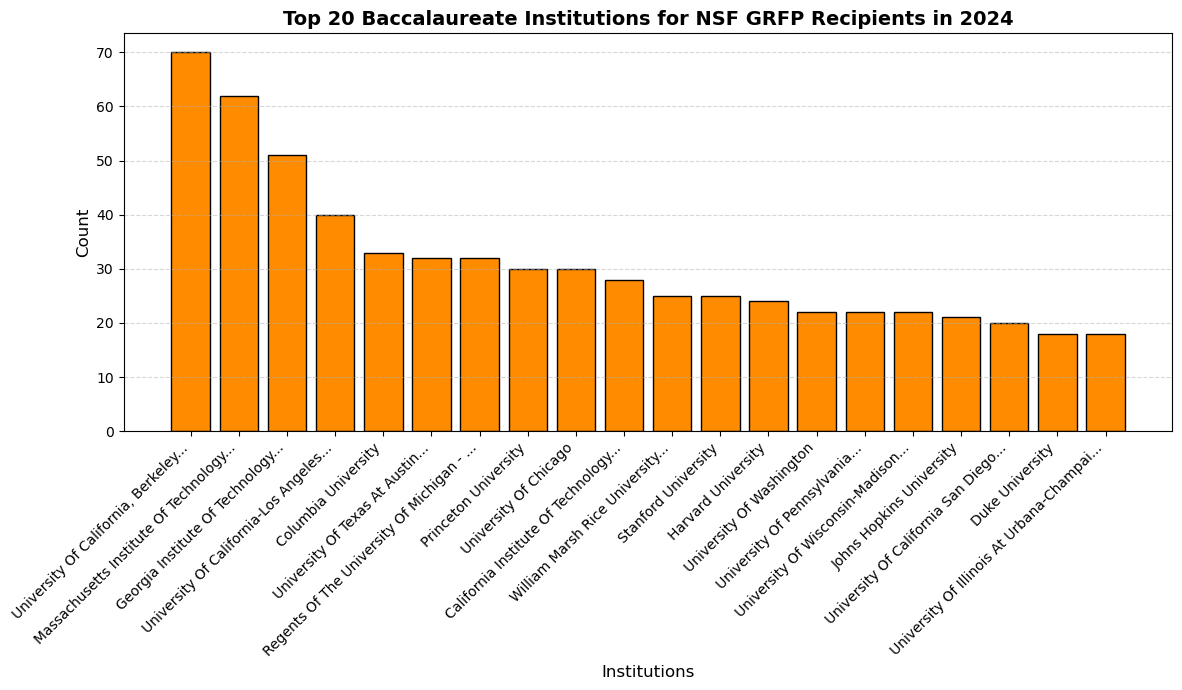
These statistics were derived from public NSF data, accessible here [2].
References
[1] https://www.nsf.gov/edu/GRFPFacts.jsp
[2] https://www.research.gov/grfp/AwardeeList.do?method=loadAwardeeList
Enjoy Reading This Article?
Here are some more articles you might like to read next: